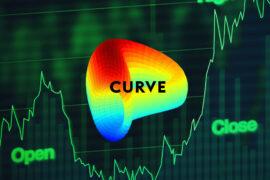
In many respects, the crypto markets are no different than standard stock markets. Yes, the underlying asset is unique, but the analysis that goes into tracking the value of the asset is very much the same. And if you use these same principles, you can expect to get positive results.
Crypto Markets vs. Stock Markets
Trading is something that has underpinned economies for centuries – likely since the beginning of time. Stock exchanges are relatively new. Cryptocurrency exchanges are even newer. (They’re still very much in the infancy stage.) And while they share many commonalities, there are also some differences. Understanding where they’re similar and where they’re unique will help you make smart findings in your analysis.
The underlying asset is the primary point of differentiation between crypto exchanges and stock exchanges. Whereas a stock exchange trades in shares of a company, a cryptocurrency exchange trades in currency.
Perhaps the biggest point of contention (up until now) is the idea of volatility. While stock exchanges can go on long bull or bear markets, they typically occur in incremental ways. Cryptocurrency exchanges can experience major fluctuations in a matter of minutes or hours.
“The market is new, meaning that its highs and lows are very pronounced,” Cointree explains. “A far smaller marketplace, cryptocurrency exchanges are also vulnerable to the trade movements of ‘whale’ traders. This means that the whole market can be vulnerable to the trade decisions of those heavily invested.”
The good news is that as time passes, there’s an increasingly large data set to analyze. And with more information, it becomes possible to develop more sophisticated trading algorithms and predictive signals to offset some of the volatility.
3 Methods for Analyzing Crypto
Investing in cryptocurrencies is still seen as highly risky and speculative. But while any single crypto faces the risk of collapsing, almost all financial experts agree that crypto is the way of the future. It’s not a matter of if cryptocurrencies will be a staple asset in five, 10, or 15 years – it’s simply which coins will lead the way.
As you analyze crypto – whether it’s Bitcoin, Ethereum, Litecoin, or some other smaller coins – think of the crypto markets as stock exchanges and consider applying certain methods of analysis.
Bitdegree provides the most popular blockchain and crypto topics simply explained by using examples, interesting stories and clear analogies. You can enroll in the best online courses today.
Technical Analysis
With cryptocurrency technical analysis, you’re studying statistical trends and looking at historical volume and activity – including price movements and swings – to make educated predictions on where the price is going over the short-term and long-term.
While you’ll have to determine which technical trading tools fit into your trading “toolbelt,” Fibonacci retracement trading is undoubtedly worth a look.
“Fibonacci retracement trading is a popular technical tool used by traders to determine price action,” RJO Futures mentions. “Fibonacci retracement trading is taking two extreme points from a contract’s price, usually a high and a low, then dividing it by a Fibonacci ratio to determine support and resistance levels.”
This method of analyzing fluctuations in value can work well for crypto, but you have to act quickly. With so much volatility, support and resistance levels can experience major ups and downs.
Fundamental Analysis
With fundamental analysis, you’re not looking where prices are going, per se. Instead, you’re trying to understand what’s supporting the valuation. In other words, what are the underlying financials? Using this analysis, you can determine whether the data says the crypto is underpriced or overpriced at the moment.
Sentimental Analysis
The third approach involves sentimental analysis. And while you have to be very careful with sentimental analysis in stock investing, it can actually play a pretty useful role in cryptocurrency exchanges.
With sentimental analysis, you’re looking beyond the numbers to see what key players think and feel. This may include journalists, influencers, investors, hedge fund managers, and economists. The idea is that the data isn’t always indicative of what’s happening. If you can detect major confidence (or a lack of trust), it could tell you that steep growth or decline is on the horizon – and that the market simply hasn’t yet responded.
Adding it All Up
You can’t assume that a cryptocurrency exchange is going to operate the same as a stock market exchange. Volatility is much higher and, while upside is arguably greater, the downside is very steep. Having said that, by applying technical analysis, fundamental analysis, and sentimental analysis to your activity, you can increase your odds of being successful.


